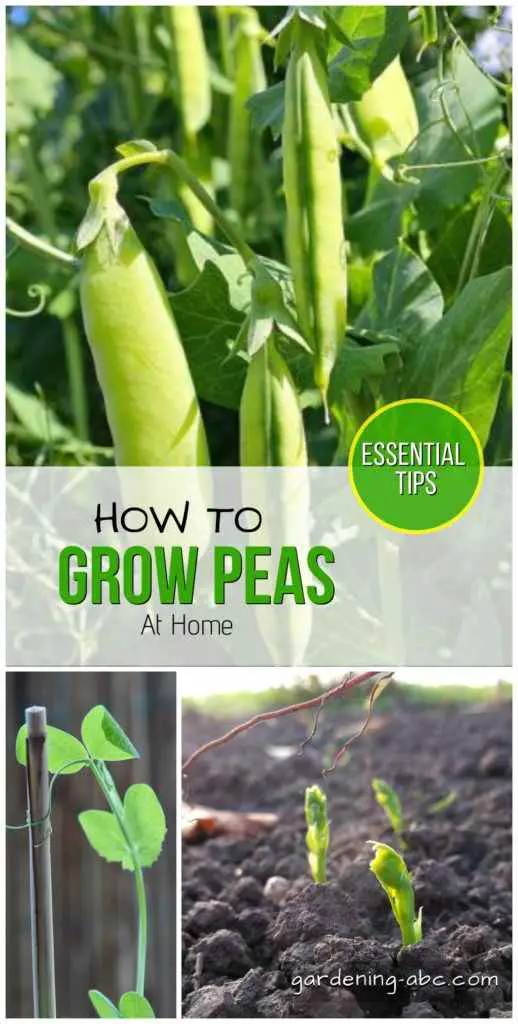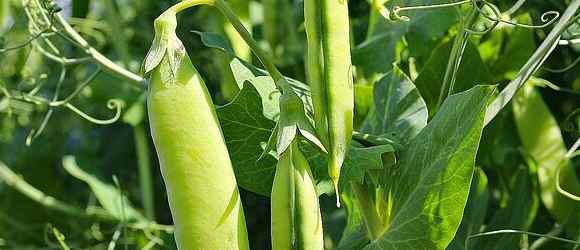We use affiliate links to run our site. When you buy through links on our site, we may earn an affiliate commission, without any added cost to you. Learn more
If you’re looking for a fun and rewarding gardening experience, growing peas at home is a great option! Peas are relatively easy to grow, and they produce a delicious crop that can be enjoyed fresh or frozen. Plus, growing your own peas is a great way to save money on your grocery bill.
Here’s a quick guide to get you started on growing peas at home:
How to grow peas in the garden:
Peas are cool climate plants, they do best when planted in early spring. so be sure to get your seeds in the ground as soon as the soil is workable.
Planting early will also ensure that the peas will have plenty of time to grow before the summer heat arrives.
soil preparation:
Peas prefer sandy loam soil with a great drainage facility. Sandy loam soil is a type of soil that consists of a mixture of sand, silt, and clay. This type of soil is ideal for peas because it has good drainage and aeration. Sandy loam soil is also easy to work with and is relatively inexpensive.
Soil pH For Peas:
When it comes to growing peas, having the right pH level in your soil is key. The ideal pH level for peas is between 6.5 and 7.5. If your soil is too acidic or too alkaline, it can affect the growth and development of your peas.
A simple soil test will tell you what the pH level of your soil is. You can usually find soil testers at your local nursery or garden center. Once you know the pH level of your soil, you can adjust it accordingly.
If your soil is too acidic, you can add some lime to raise the pH level. If your soil is too alkaline, you can add some sulfur to lower the pH level. By keeping an eye on the pH level of your soil, you can ensure that your peas will grow and thrive!
Plant different varieties all at once and don’t make an attempt to plant them with some time gap. They will mature at different times and give you a long time to harvest and enjoy the peas.
Check your local garden shop for different varieties of seeds available in your locality.
How to fertilize pea plants:

Peas require very little fertilization. With the help of the nitrogen-fixing bacteria in their roots, they can manage their share of nitrogen.
Though you have to add other nutrients from time to time you rarely need to add nitrogen. An excess amount of nitrogen can result in lush foliage and a reduction in pods.
Please keep this in mind in case you prepare your own compost, and add a lesser amount of nitrogen-rich materials.
How to water pea plants:
For good pea production, you need to take care of the watering needs of the plant. Generally, deep watering once or twice a week will be sufficient. During the time of blossoming, you need to provide extra water.
Dry soil can drastically reduce the chance of good pea production. Good sunlight is required for fruit production, so don’t ignore that.

Support for Pea Plants:
Providing support as per the variety of the plant is an essential part of pea plant care. For taller varieties, you need to provide a trellis, bamboo canes, or netting. For dwarf varieties netting will be sufficient.
Please make sure not to plant peas or any legume plant in the same soil more than once in three years.
Companion Plants for Peas:
Being a legume plant pea is very good in companion planting. It works well with most plants. Radish, spinach, lettuce, and leafy vegetables all do well with peas.
Cucumbers and potatoes show a special affinity towards peas. Just avoid garlic and onions for better pea production.
How to Harvest Peas:
One important tip for harvesting. Don’t pull out the roots while harvesting rather cut off the stem above the ground level. The roots contain nitrogen-fixing bacteria.
Allow these roots to rot down in the soil to increase the nitrogen content of the soil which will be beneficial for the next plant in that soil.
The root system of a pea plant is not very deep. So while picking the pods use both of your hands, one to hold the vines, and pick the pods with the other one.
To increase the pod yields you need to pick them regularly. The yield will be reduced in case the overly matured pods are left in the vines.
The best way to enjoy peas is fresh and direct from the plants. But in case your production is much more than daily consumption, you can definitely store in the refrigerator or you can even dry them in sunlight and then also store them in containers.
Conclusion:
In conclusion, growing peas at home is a fun and easy way to get your kids involved in gardening. It’s a great way to teach them about where their food comes from and how it’s grown.
Peas are versatile vegetables that can be used in many different dishes. They are a good source of vitamins and minerals, and they are low in calories. Growing peas at home is a great way to get your kids excited about eating healthy food.
I hope this post was helpful to you. If you like the post please consider sharing it with others too.

Hope you have enjoyed the article. Like to know your feedback on this.
Amazon and the Amazon logo are trademarks of Amazon.com, Inc, or its affiliates.

1 thought on “ABC of Growing Peas At Home: Simple Pea Plant Care Tips That You Can Try”